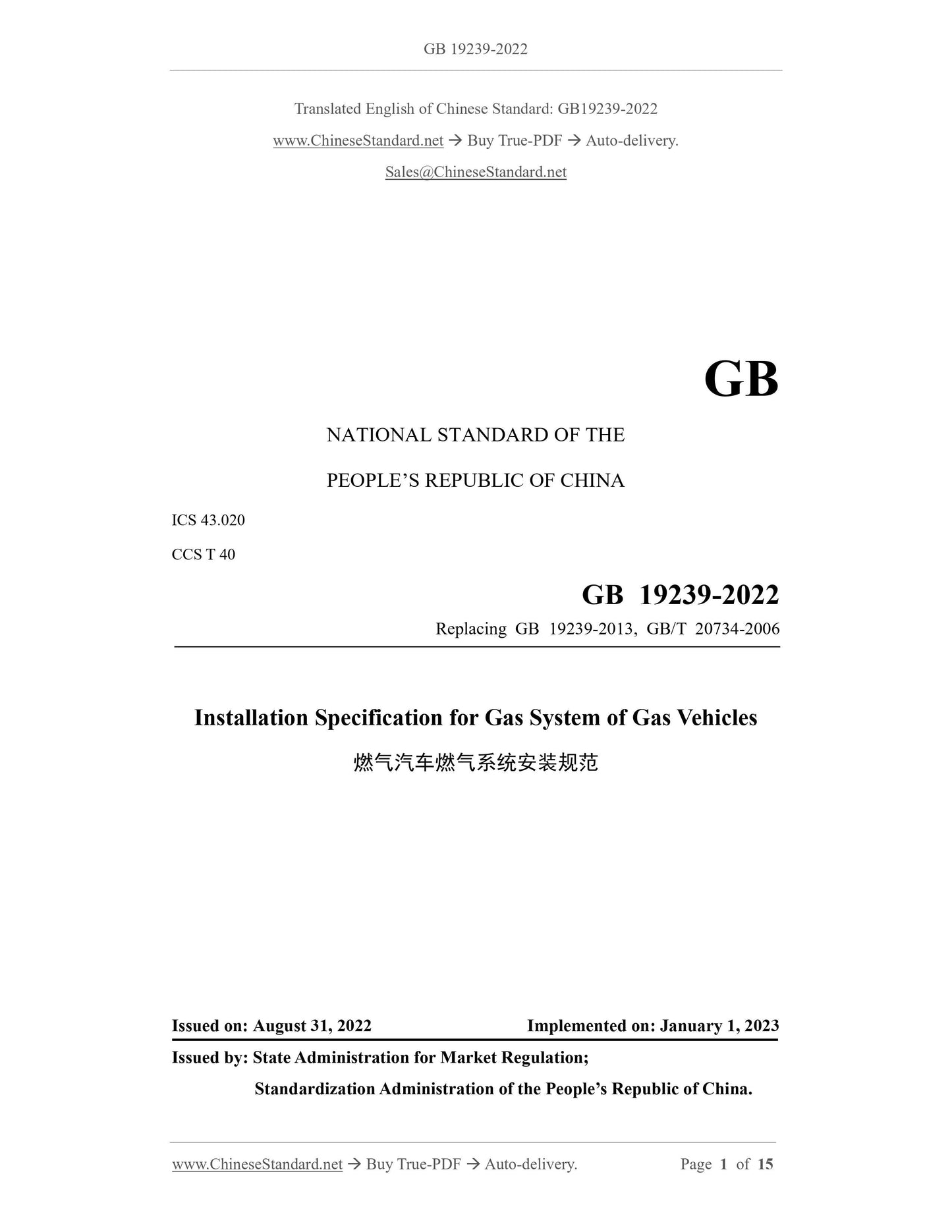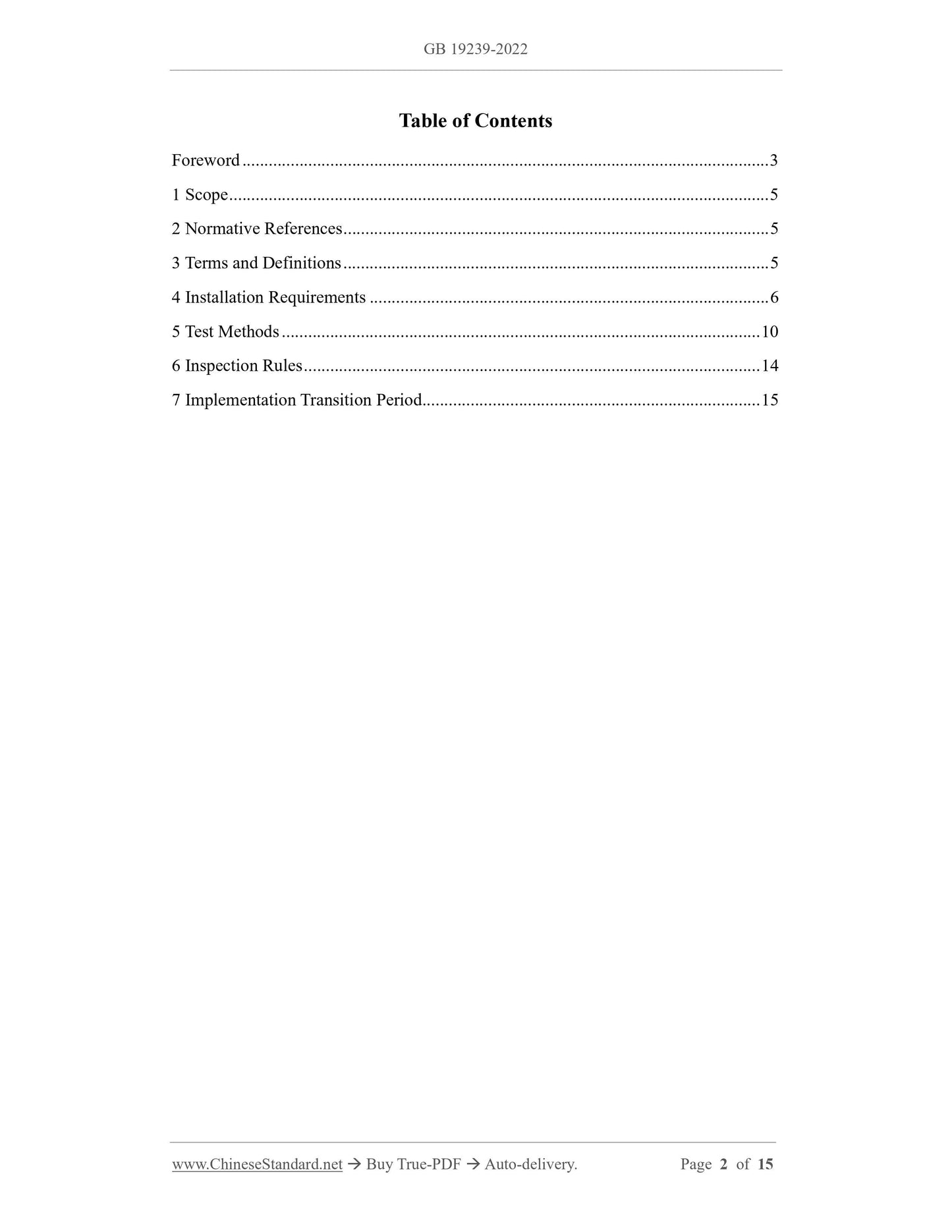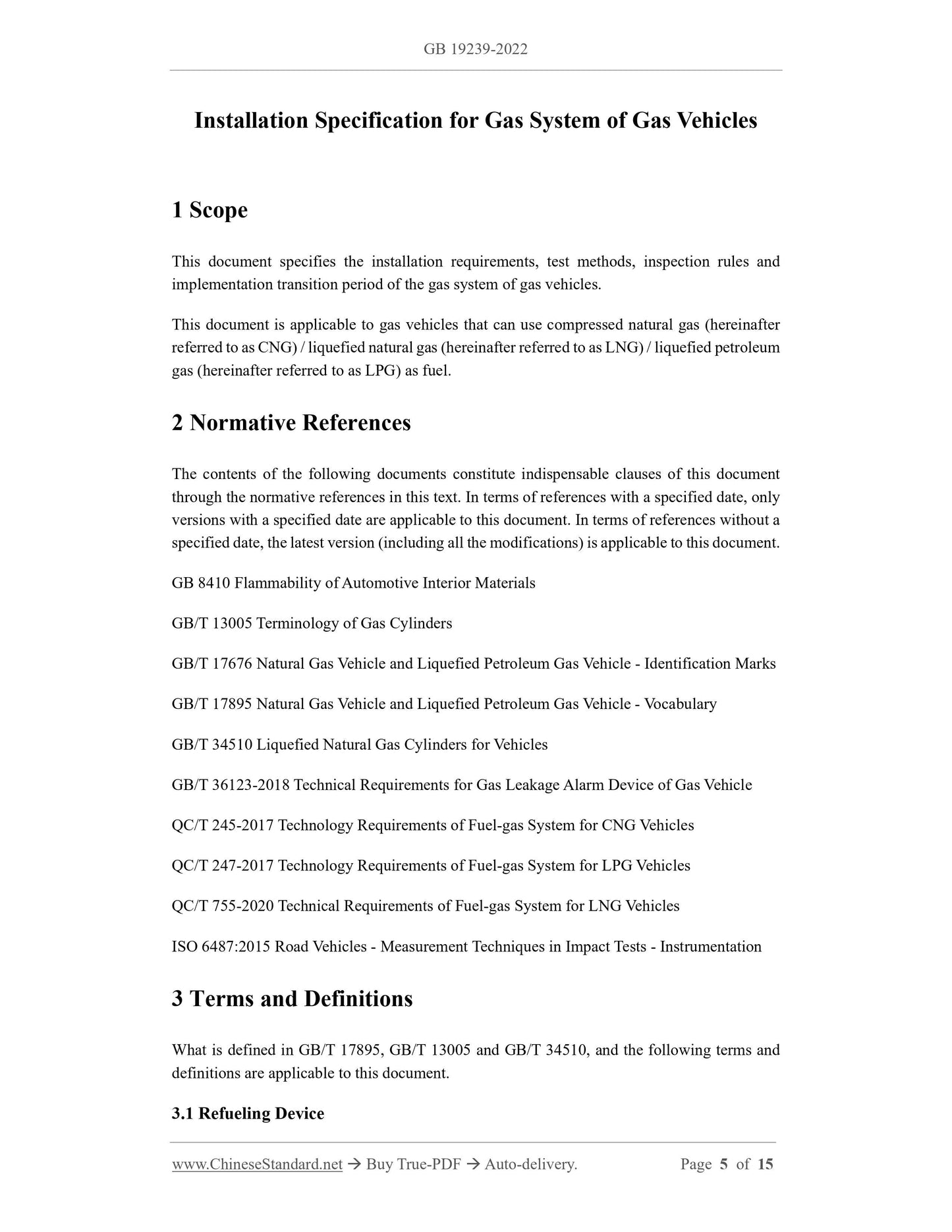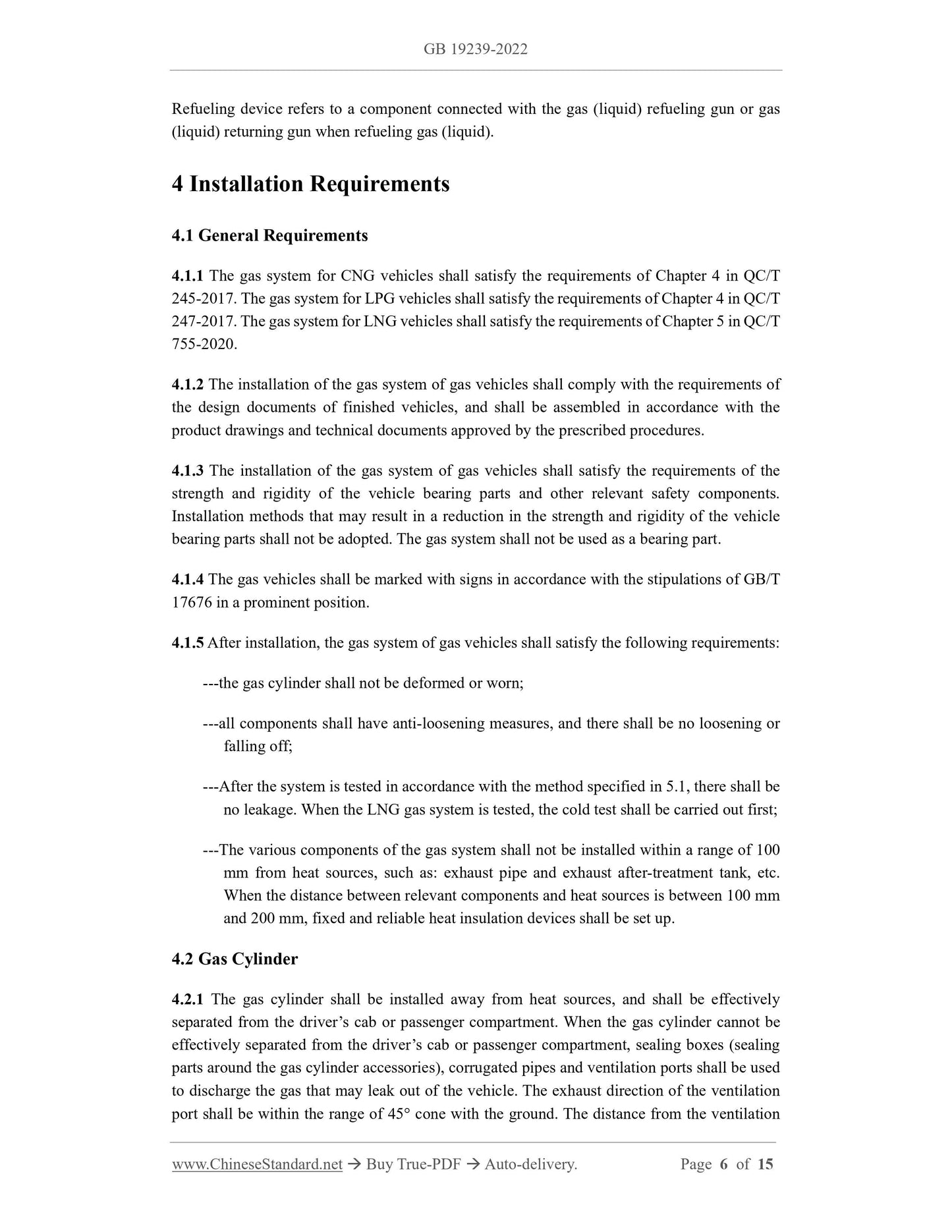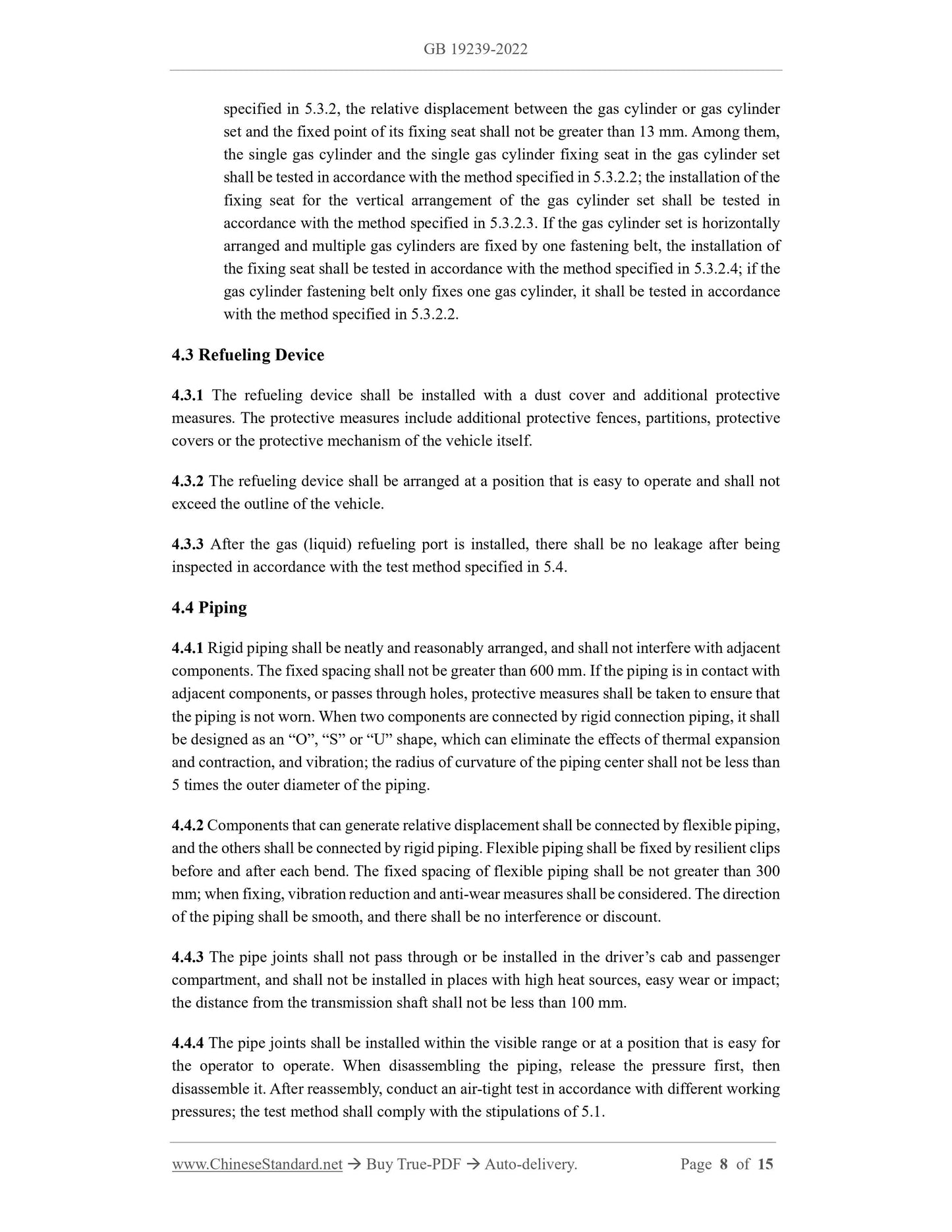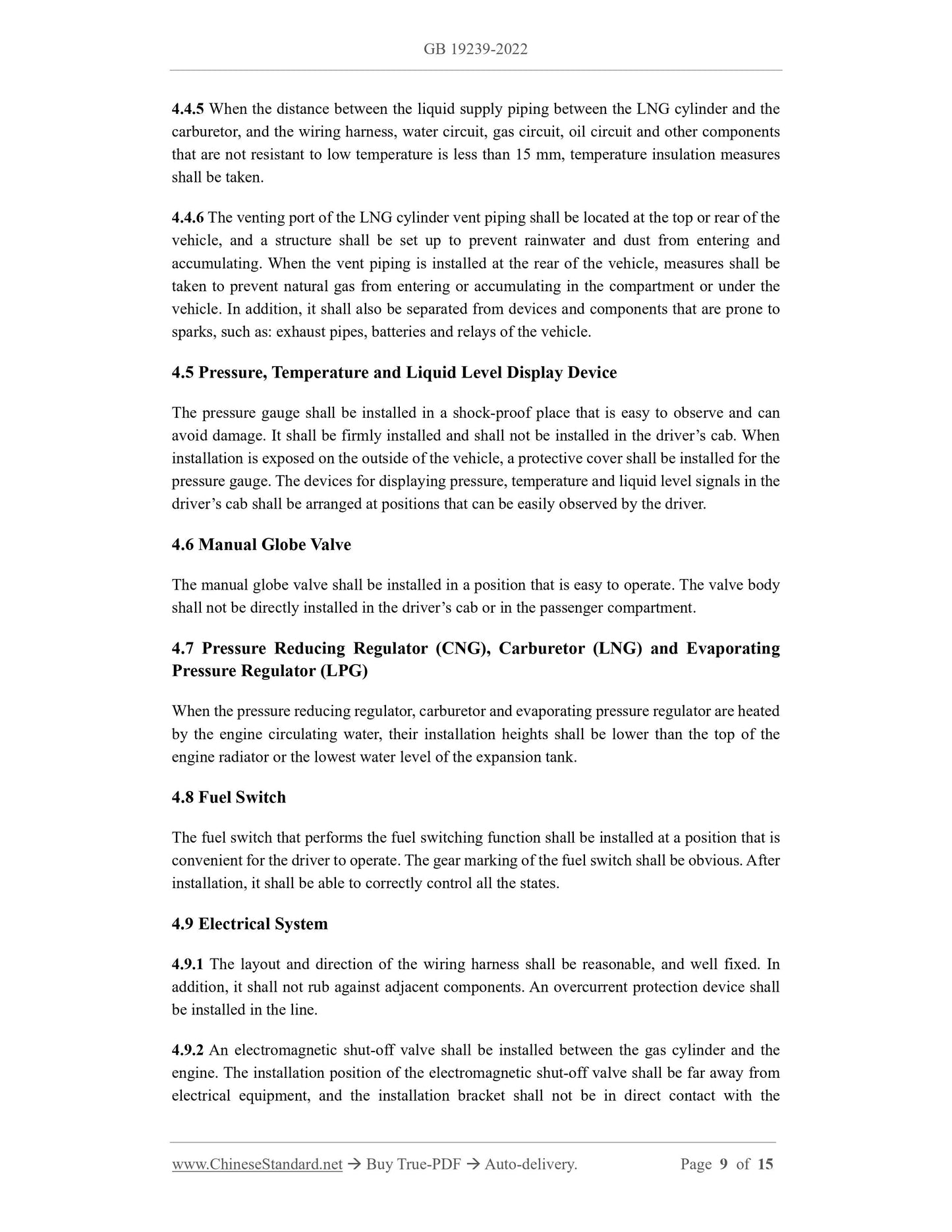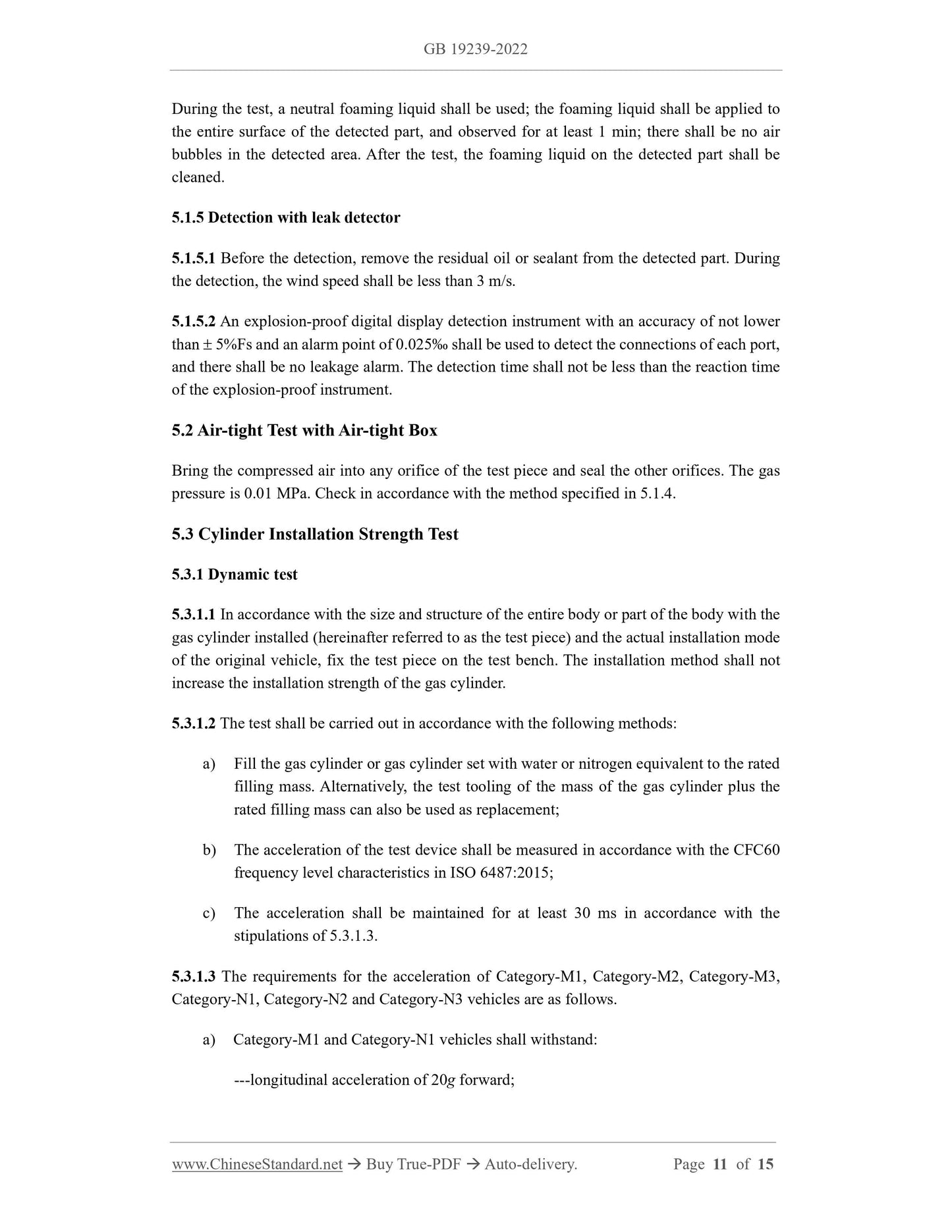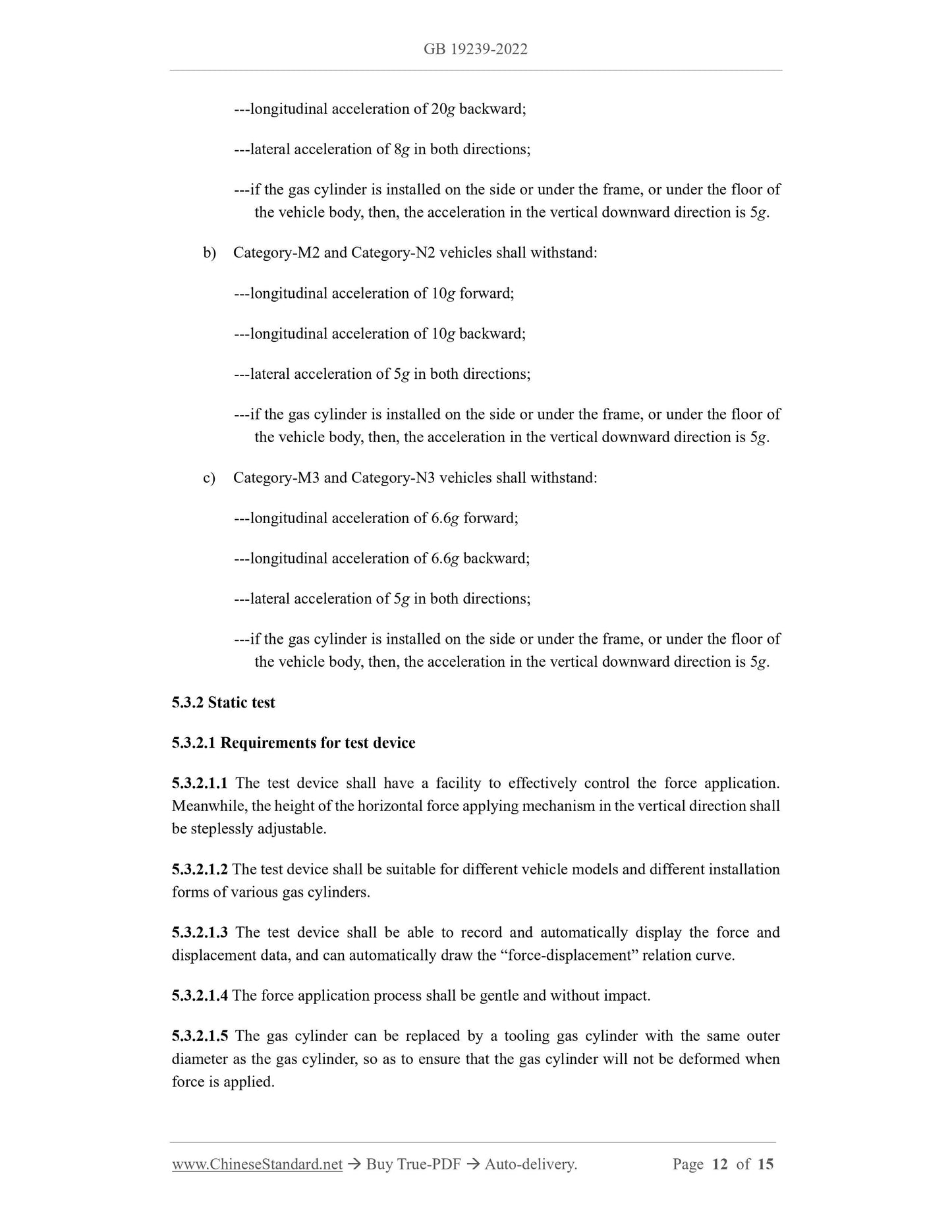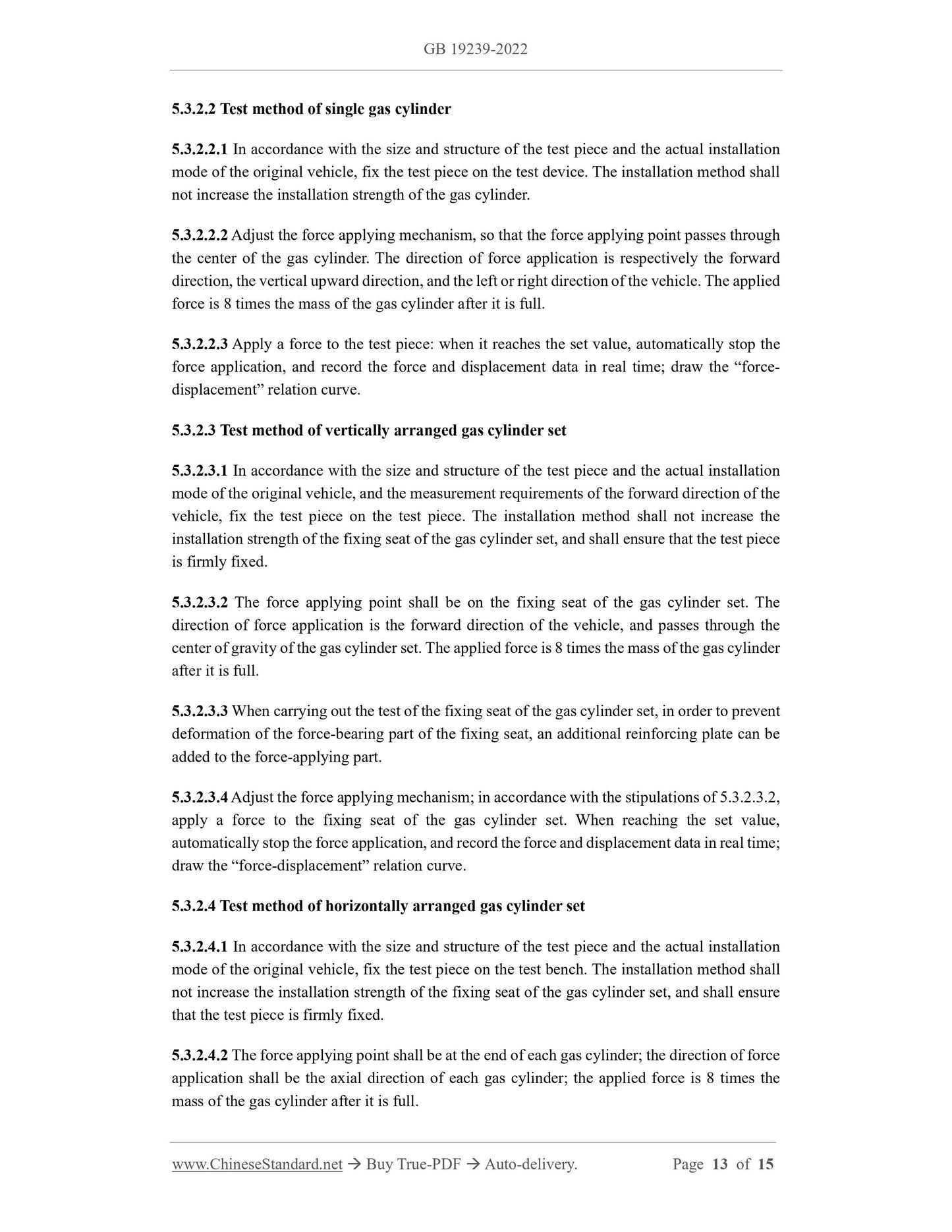1
/
of
9
www.ChineseStandard.us -- Field Test Asia Pte. Ltd.
GB 19239-2022 English PDF
GB 19239-2022 English PDF
Regular price
$170.00
Regular price
Sale price
$170.00
Unit price
/
per
Shipping calculated at checkout.
Couldn't load pickup availability
GB 19239-2022: Installation specification for gas system of gas vehicles
Delivery: 9 seconds. Download (and Email) true-PDF + Invoice.Get Quotation: Click GB 19239-2022 (Self-service in 1-minute)
Newer / historical versions: GB 19239-2022
Preview True-PDF
Scope
This document specifies the installation requirements, test methods, inspection rules andimplementation transition period of the gas system of gas vehicles.
This document is applicable to gas vehicles that can use compressed natural gas (hereinafter
referred to as CNG) / liquefied natural gas (hereinafter referred to as LNG) / liquefied petroleum
gas (hereinafter referred to as LPG) as fuel.
Basic Data
| Standard ID | GB 19239-2022 (GB19239-2022) |
| Description (Translated English) | Installation specification for gas system of gas vehicles |
| Sector / Industry | National Standard |
| Classification of Chinese Standard | T40 |
| Word Count Estimation | 12,191 |
| Issuing agency(ies) | State Administration for Market Regulation, China National Standardization Administration |
Share
